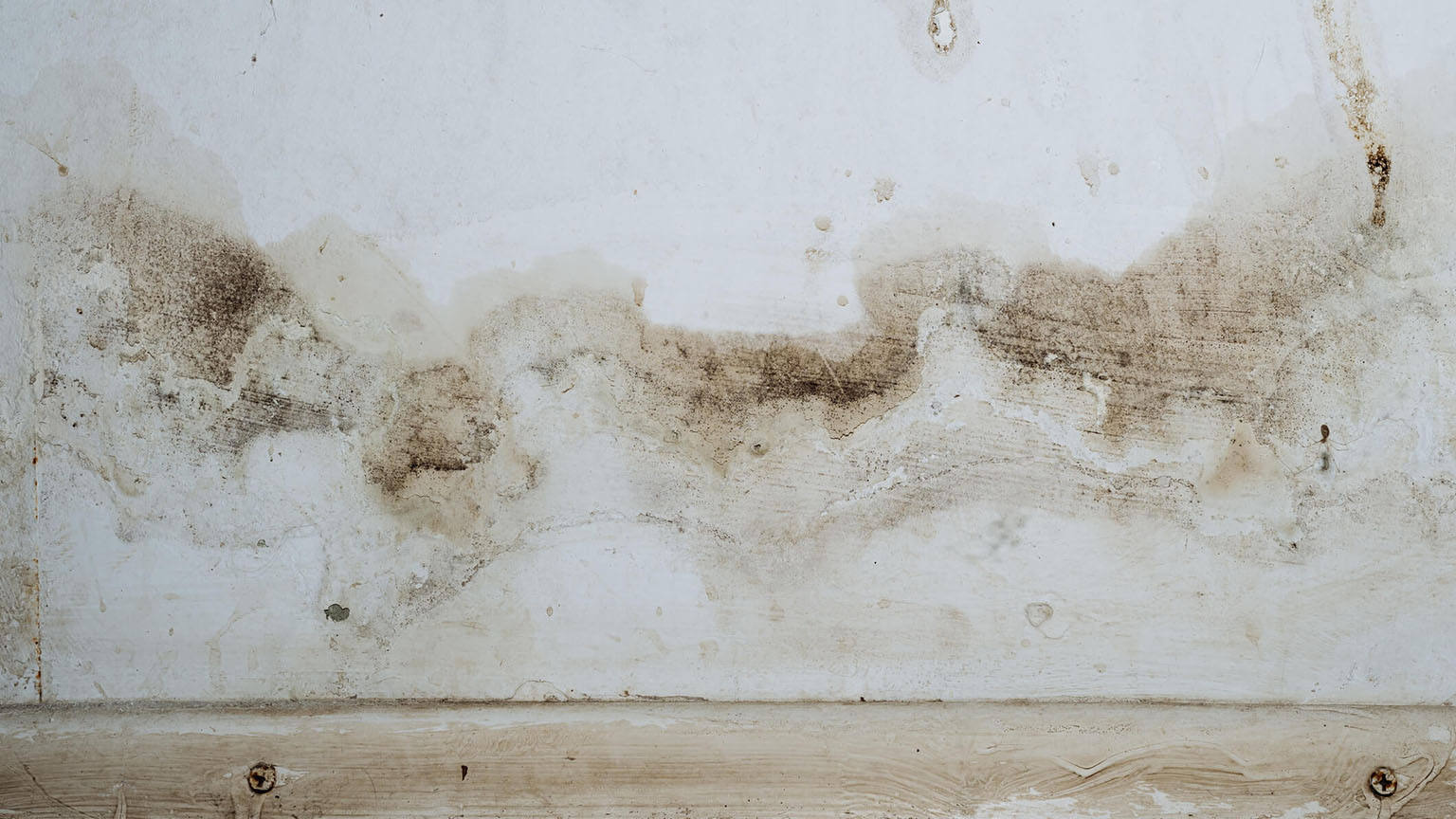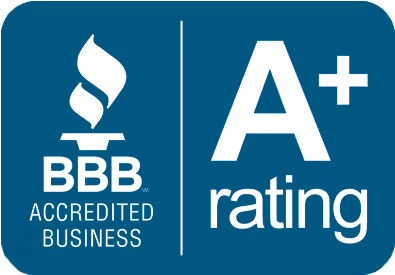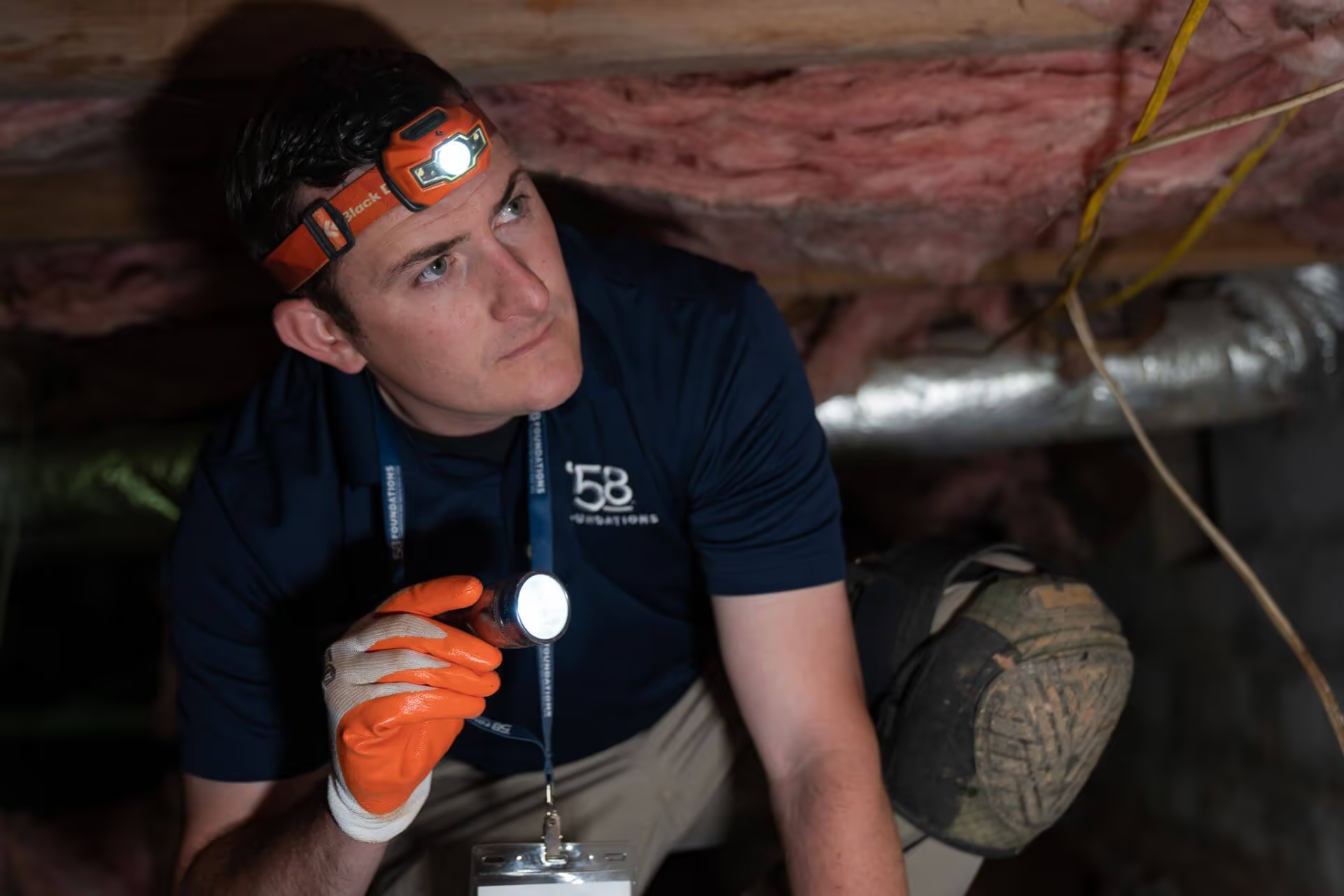Discoloration on drywall can be a sign of moisture problems, mold, or water intrusion. Learn the causes behind these stains and how professional waterproofing or foundation repair can address the underlying issue and protect your home from further damage.






Drywall serves as a widely used material for interior walls and ceilings in both residential and commercial constructions. While it offers dependable protection, the porous texture of drywall can inadvertently foster mold growth, resulting in unsightly discoloration and potential health issues. Let’s delve into the origins of discolored mold on plasterboard, strategies for prevention, and our professional guidance to effectively address the matter.
The innate porous quality of drywall makes it highly absorbent to moisture, creating an optimal breeding environment for mold. Mold thrives under specific conditions: moisture, a nutrient source, and a warm climate. Uncontrolled humidity levels can lead to mold growth, manifesting as discolored patches on walls. Various sources, including cracks, elevated humidity, condensation, and water exposure, can contribute to the moisture content.
Mitigating moisture levels is pivotal in preventing mold from taking hold on drywall. This entails enhancing ventilation in areas with high humidity, such as bathrooms and kitchens. Promptly addressing any water-related damage or plumbing issues is crucial. Additionally, maintaining consistent indoor temperatures helps to minimize condensation, which can also fuel mold growth. Employing a reliable dehumidifier is instrumental in effectively managing moisture.
Upon discovering mold on a drywall surface, swift action is prudent to curb its spread and mitigate potential health risks. Our recommendation is to seek certified mold remediation inspection from our experts, as attempting mold removal without proper tools and methods can pose hazards. The remediation process encompasses identifying the moisture source, isolating the affected area, and responsibly disposing of compromised drywall or materials. Subsequently, the affected area is thoroughly sanitized and treated with antimicrobial solutions to discourage future growth.
Detecting mold staining on plasterboard can prove vexing and potentially perilous for property proprietors and building managers alike. Acquiring knowledge about the sources of mold propagation and implementing preventative measures can mitigate the need for extensive remediation. Swiftly addressing mold contamination and enlisting the assistance of experts is paramount. By following prudent steps and exercising caution, addressing mold on drywall is attainable, and its recurrence can be effectively thwarted.






We respect your privacy. By submitting, you authorize '58 Foundations and Waterproofing to reach you via call, email or text for information about your project needs. We will never share your personal information with third parties for marketing purposes. You can opt out at any time. Message/data rates may apply. Consent is not a condition of purchase. Privacy Policy